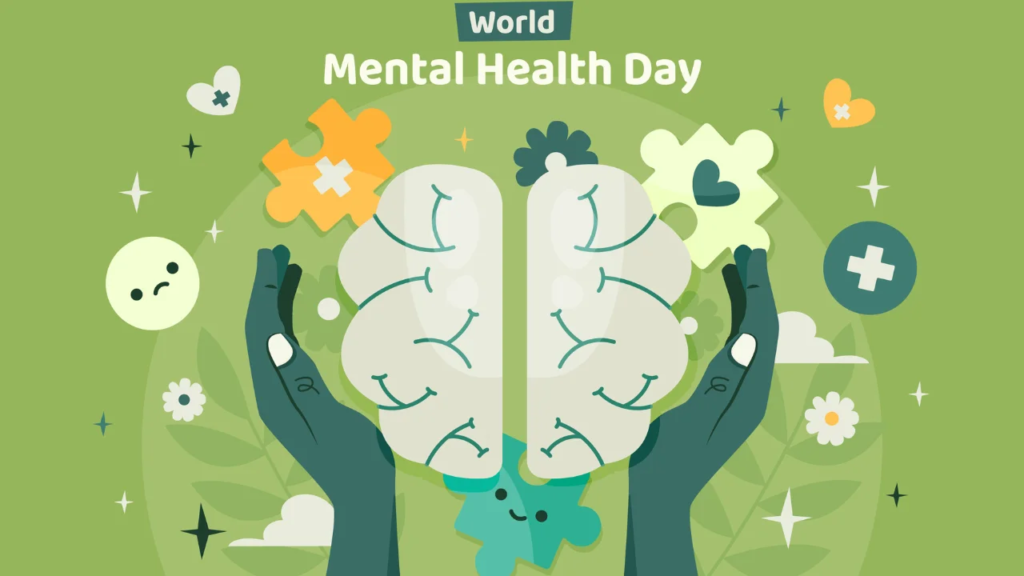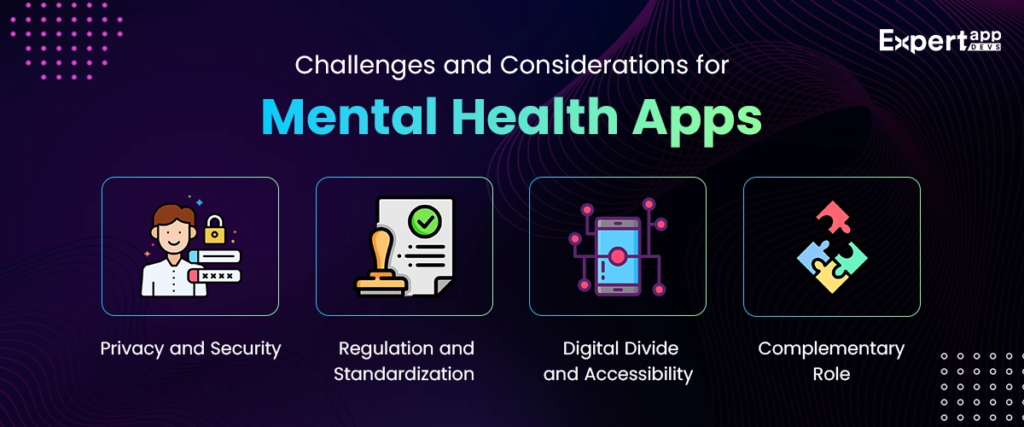In recent years, mental health has taken center stage in public conversations,Health Apps thanks to national awareness campaigns like Mental Health Awareness Month and World Mental Health Day. These initiatives, combined with a growing acceptance of mental health care, have driven a surge in the use of mental health apps. In 2025, these apps are seeing record downloads as more people turn to digital tools to manage stress, anxiety, and other mental health challenges. This article explores why these apps are gaining popularity, how national campaigns are fueling their growth, and what this means for the future of mental health care.

A Growing Need for Mental Health Support
Mental health issues are more common than many realize. According to the World Health Organization, around 280 million people worldwide suffer from depression, and countless others deal with anxiety, stress, or other mental health conditions. The COVID-19 pandemic further highlighted the need for accessible mental health resources, as lockdowns and social isolation took a toll on people’s well-being. Even post-pandemic, the demand for mental health support remains high, with many seeking convenient and affordable solutions.
Traditional therapy, while effective, can be expensive, time-consuming, or hard to access for some. Mental health apps have stepped in to fill this gap, offering tools like guided meditations, mood tracking, and virtual therapy sessions. Apps like Calm, Headspace, and BetterHelp have become household names, providing users with ways to manage their mental health from the comfort of their smartphones. With over 100 million downloads, Calm alone is a testament to the growing reliance on these digital platforms.
The Role of National Awareness Campaigns
National awareness campaigns have played a key role in driving the popularity of mental health apps. In the United States, Mental Health Awareness Month, observed every May since 1949, has been a major force in reducing stigma and encouraging people to seek help. Organizations like the Substance Abuse and Mental Health Services Administration (SAMHSA) and the National Alliance on Mental Illness (NAMI) use this month to share resources, promote open conversations, and highlight the importance of mental well-being.
In 2025, the theme of Mental Health Awareness Month focused on community, emphasizing the power of connection in supporting mental health. Campaigns encouraged people to check in on loved ones, share their stories, and explore tools like mental health apps to manage their well-being. Social media posts from SAMHSA and NAMI, using hashtags like #MHAM2025 and #MentalHealthMatters, reached millions, directing users to apps that offer practical solutions for stress, anxiety, and depression.

Across the Atlantic, Mental Health Awareness Week in the UK, running from May 12 to 18, 2025, also made a significant impact. Organized by the Mental Health Foundation, the week highlighted the importance of community and connection. The campaign’s social media toolkit, complete with downloadable graphics and conversation guides, encouraged workplaces, schools, and individuals to talk about mental health. Many of these resources pointed to apps as accessible tools for self-care, leading to a spike in downloads for apps like Moodfit and Daylio.
World Mental Health Day, observed globally on October 10, further amplified these efforts. The World Health Organization used the day to raise awareness about mental health issues and promote digital solutions like apps. These campaigns have not only normalized conversations about mental health but also made people more comfortable downloading and using apps to address their needs.
Why Mental Health Apps Are So Popular
The surge in mental health app downloads can be attributed to several factors. First, these apps are incredibly convenient. Unlike traditional therapy, which requires scheduling appointments and traveling to an office, apps are available 24/7. Whether someone needs a quick breathing exercise to calm anxiety or a guided meditation to help with sleep, apps like Headspace and Calm deliver instant support.
Second, mental health apps are often more affordable than in-person therapy. Many offer free versions with basic features, while premium subscriptions, like Calm’s $69.99 annual plan or Headspace’s $70 yearly option, provide access to a wide range of tools at a fraction of the cost of weekly therapy sessions. Some apps, like Safety Plan, developed by the VA’s National Center for PTSD, are completely free, making them accessible to a broader audience.

Third, the variety of features in these apps appeals to different needs. For example, Moodfit and Recovery Record focus on tracking moods and behaviors, helping users identify patterns and triggers. Happify uses games and activities based on positive psychology to boost mood, while BetterHelp and Talkspace connect users with licensed therapists for virtual sessions. This diversity ensures that there’s an app for almost every mental health need, from managing stress to supporting recovery from serious conditions like PTSD.
Finally, the stigma around mental health is fading, thanks to awareness campaigns. People are more open to seeking help, and apps provide a private, low-pressure way to start. For younger generations, who are already comfortable with technology, downloading a mental health app feels like a natural step toward self-care.
Record Downloads in 2025
The numbers tell a compelling story. According to market research, the global mental health apps market was valued at $7.48 billion in 2024 and is expected to grow to $23.80 billion by 2032, with a compound annual growth rate of 18%. North America leads the market, driven by widespread smartphone use and increasing awareness of mental health issues. In 2025, apps like Calm and Headspace reported millions of new downloads, with Calm’ils like Calm surpassing 100 million total downloads.
Smaller organizations have also seen impressive growth. For example, stem4, a UK-based charity, announced during Mental Health Awareness Week 2025 that its suite of mental health apps had reached over 5 million downloads. These apps, designed for young people, offer tools to manage anxiety, depression, and self-harm, showing that even niche apps are benefiting from the awareness created by national campaigns.
The COVID-19 pandemic initially sparked a surge in app usage, as people sought digital solutions during lockdowns. However, the sustained growth in 2025 suggests that mental health apps are here to stay. Awareness campaigns have kept the momentum going, encouraging new users to try apps and existing users to explore premium features.
Challenges and Considerations
Despite their popularity, mental health apps are not without challenges. Privacy concerns are a major issue, as some apps have faced scrutiny for sharing user data with third parties. For example, BetterHelp was fined $7.8 million in 2023 for allegedly mishandling patient data. Users are advised to carefully review an app’s privacy policy before downloading.
Additionally, not all apps are backed by rigorous research. While some, like those using cognitive behavioral therapy (CBT) techniques, have shown promise in studies, others lack evidence of effectiveness. Experts recommend choosing apps developed by reputable organizations or those endorsed by mental health professionals.
Finally, apps are not a replacement for professional therapy. While they can complement traditional care, individuals with serious mental health conditions should consult a licensed therapist or doctor. Apps are best used as a starting point or supplementary tool.
The Future of Mental Health Apps
The record downloads of mental health apps in 2025 signal a shift in how people approach mental health care. As national awareness campaigns continue to break down stigma and promote digital solutions, the market for these apps is expected to grow. Advances in artificial intelligence and machine learning are also enhancing apps, enabling them to offer personalized recommendations and more effective interventions.
Governments and organizations are likely to play a bigger role in supporting this growth. For example, initiatives to improve mental health care access, like those funded by Medicaid in the U.S., could integrate apps into broader treatment plans. Meanwhile, campaigns like Mental Health Awareness Month and World Mental Health Day will continue to drive awareness and encourage downloads.
Conclusion
Mental health apps are transforming the way people care for their well-being, and national awareness campaigns are a driving force behind their record downloads in 2025. By making mental health resources accessible, affordable, and stigma-free, these apps are empowering millions to take control of their mental health. As technology evolves and awareness grows, mental health apps will likely become an even bigger part of the global effort to support mental well-being. For now, their soaring popularity is a clear sign that people are ready to prioritize their mental health—and that’s a trend worth celebrating.
Must Read :- Gen Z Is Bringing Back 2000s Fashion Aesthetics Through Instagram Reels






